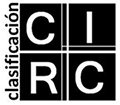Matter of context? On legal and political aspects of understanding totalitarian symbols
DOI :
https://doi.org/10.18002/rjule.i10.7439Mots-clés :
Freedom of expression, Symbolic speach, Totalitarian symbols, Swastika, Criminal code, ECTHRRésumé
The ban of symbols of totalitarian regimes is generally accepted in Europe although constituting a remarkable limitation on the freedom of expression. The legitimate reason for this is the historical situation in which the victims of totalitarian regimes still live with us, and the relatively young democracies want to prevent the return of toxic ideas and dictatorships. The peculiarity of symbolic speech is that the symbols used can have multiple meanings, so there may be a need to punish the use of these symbols only in case of promoting totalitarian systems and ideologies. This paper aims to analyse Central European (and the turns in Hungarian) legal regulation and cases arising from the prohibition; pointing out how consistently the courts take into account the context of the use of symbols and the historical background of symbols.
Téléchargements
Références
BITIUKOVA, Natalija: Hate Speech in Lithuania. (2013) http://hrmi.lt/wp-content/uploads/2016/08Neapykantos_kurstymas_EN.pdf
BYCHAWSKA-SINIARSKA, Dominika: Protecting the right to freedom of expression under the European Convention on Human Rights. A handbook for legal practitioners. Council of Europe. (2017) Available: https://rm.coe.int/handbook-freedom-of-expressioneng/1680732814
COLE, Brendan: “True Meaning Behind Russian 'Z' Symbol Finally Revealed”. Newsweek, 07.03.2022. Available: https://www.newsweek.com/russia-ukraine-z-vremya-symbolmay-day-victory-1698904
dgs/SPIEGEL “The Truth about 88. New Book Reveals Secret Meaning of Neo-Nazi Codes”. Spiegel Online. (2011) Available: http://www.spiegel.de/international/germany/thetruth-about-88-new-book-reveals-secret-meaning-of-neo-nazi-codes-a-770820.html
BELOVICS, E. - MOLNÁR, G. – SINKU, P.: Büntetőjog 2. Különös rész: A 2012. évi C.törvény alapján (Criminal Law 2: Special Provisions based on Act C of 2012). HVGORAC, Budapest, 2012.
HAVAS, F. (1997). “Nyelviség” (Linguistics) In: Pannon Enciklopédia. https://www.arcanum.com/en/online-kiadvanyok/pannon-pannon-enciklopedia-1/magyar-nyelv-es-irodalom-31D6/a-nyelv-alapjai-3249/a-nyelviseg-havas-ferenc-324B/
KOLTAY, András: “A vajnai-ügy Az Emberi Jogok Európai Bíróságának ítélete a vörös csillag viselésének büntethetőségéről. (The Vajnai case The European Court of Human Rights and the criminality of the red star)” JeMa 2010/1.
McGOLDRICK, James M. Jr.: “Symbolic Speech: A Message from Mind to Mind”. Oklahoma Law Review 2008/1. Available at: http://digitalcommons.law.ou.edu/olr/vol61/iss1/1
RĂILEANU, R. et al. Annual Report On Hate Speech in Romania 2015–2016. Netrangers -ActiveWatch, Bucharest, 2017. Available at: https://fra.europa.eu/en/databases/antimuslim-hatred/node/6387
STEGBAUER, Andreas: “The Ban of Right-Wing Extremist Symbols According to Section 86a of the German Criminal Code”. German Law Journal, 2007 8(2), pp. 173-184.
SVILIČIĆ, Niksa – MALDINI, Pero: “Visual Persuasion and Politics: Ideology and Symbols of the Totalitarian Regimes’ - Case Study: Hammer and Sickle”. Collegium Antropologicum 2013/2.
TEITEL, Ruti G.: Transitional Justice. New York, Oxford University Press, 2000.
TÖRÖK, Bernát: A szólásszabadság magyar doktrínája az amerikai jogirodalom tükrében (Hungarian doctrine of freedom of expression in the light of American legal literature). Doctoral dissertation, SZTE ÁJK, 2018.
YUDINA, Natalia: Countering or Imitation: The state against the promotion of hate and the political activity of nationalists in Russia in 2017. (2018) Available at: https://www.sovacenter.ru/en/xenophobia/reports-analyses/2018/03/d39029/#_ftnref27
Téléchargements
Publiée
Comment citer
Numéro
Rubrique
Licence
(c) Tous droits réservés Péter Smuck 2022

Ce travail est disponible sous licence Creative Commons Attribution - Pas d’Utilisation Commerciale - Partage dans les Mêmes Conditions 4.0 International.
Los autores que publican en esta revista están de acuerdo con los siguientes términos:- Los autores ceden de forma no exclusiva los derechos de explotación (reproducción, distribución, comunicación pública, transformación) a la Universidad de León, por lo que pueden establecer, por separado, acuerdos adicionales para la distribución no exclusiva de la versión de la obra publicada en la revista (por ejemplo, alojarlo en un repositorio institucional o publicarlo en un libro), con un reconocimiento de su publicación inicial en esta revista.
- Este trabajo se encuentra bajo la Creative Commons Attribution-NonCommercial-ShareAlike 4.0 International License. Puede consultarse desde aquí la versión informativa y el texto legal de la licencia.
- Se permite y se anima a los autores a difundir electrónicamente las versiones pre-print (versión antes de ser evaluada) y/o post-print (versión evaluada y aceptada para su publicación) de sus obras antes de su publicación, ya que favorece su circulación y difusión más temprana y con ello un posible aumento en su citación y alcance entre la comunidad académica.








